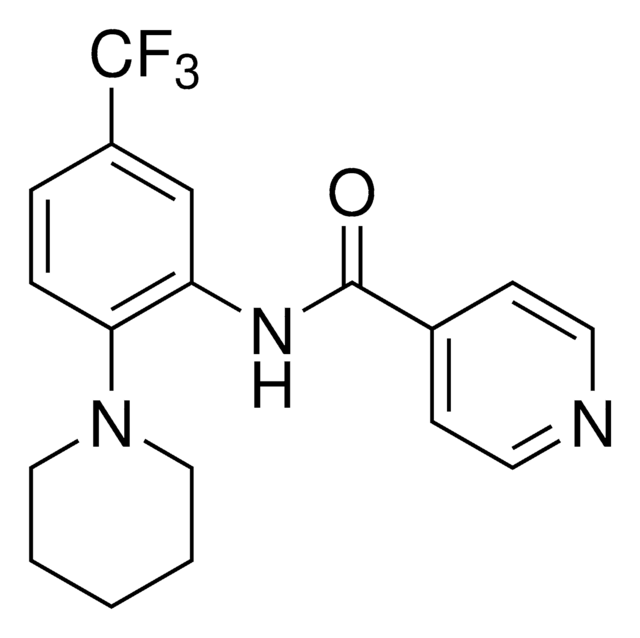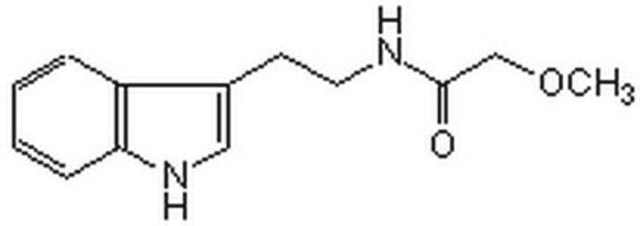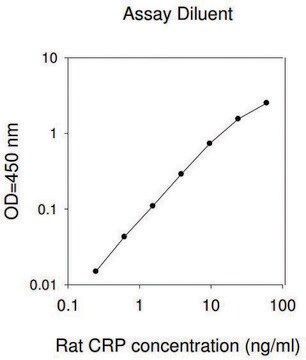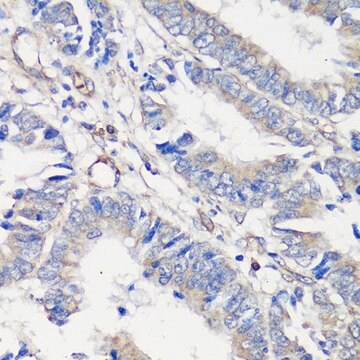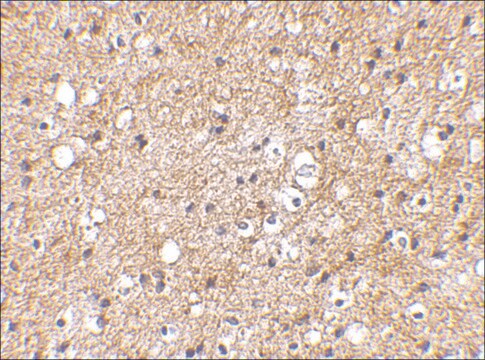推薦產品
化驗
≥98% (HPLC)
儲存條件
desiccated
顏色
yellow
溶解度
H2O: ≥20 mg/mL
儲存溫度
2-8°C
SMILES 字串
O.Cl.Cl.COc1ccc(cc1)\C=C\c2nc(NCCCN(C)C)c3ccccc3n2
InChI
1S/C22H26N4O.2ClH.H2O/c1-26(2)16-6-15-23-22-19-7-4-5-8-20(19)24-21(25-22)14-11-17-9-12-18(27-3)13-10-17;;;/h4-5,7-14H,6,15-16H2,1-3H3,(H,23,24,25);2*1H;1H2/b14-11+;;;
InChI 密鑰
JXIVIAMOMIONKY-UWCBQFGESA-N
基因資訊
human ... TP53(7157)
mouse ... TP53(22059)
rat ... TP53(24842)
應用
CP-31398 dihydrochloride hydrate has been used as a p53 stabilizer:
- to evaluate its effects on the upregulation of miRNA in human neuroblastoma cells
- to study its effects on arsenic trioxide (ATO) stabilization of p53 folding
- to study its effects on regulation of miR-34 in PC12 cells
生化/生理作用
CP-31398 dihyrochloride hydrate is a p53 stabilizer; apoptosis inducer.
CP-31398 is a styryl quinazoline that functions in preserving the activity of p53 as a tumor suppressor and transcription factor. The DNA-binding activity and apoptosis functionality of the p53 are restored by CP-31398. CP-31398 exhibits therapeutic effects against liver, skin, pancreatic, and colon cancers.
特點和優勢
This compound is a featured product for Apoptosis research. Click here to discover more featured Apoptosis products. Learn more about bioactive small molecules for other areas of research at sigma.com/discover-bsm.
訊號詞
Warning
危險分類
Acute Tox. 4 Oral - Aquatic Chronic 4 - Eye Irrit. 2 - Skin Irrit. 2
儲存類別代碼
11 - Combustible Solids
水污染物質分類(WGK)
WGK 3
閃點(°F)
Not applicable
閃點(°C)
Not applicable
William D Johnson et al.
Toxicology, 289(2-3), 141-150 (2011-08-26)
CP-31398 (N'-[2-[2-(4-methoxyphenyl)ethenyl]-4-quinazolinyl]-N,N-dimethyl-1,3-propanediamine dihydrochloride) is a styrylquinazoline that stabilizes the DNA binding conformation of p53, thereby maintaining the activity of p53 as a transcription factor and tumor suppressor. In consideration of the potential use of p53 stabilizers for cancer prevention and
Shuo Chen et al.
Cancer cell, 39(2), 225-239 (2020-12-29)
TP53 is the most frequently mutated gene in cancer, yet these mutations remain therapeutically non-actionable. Major challenges in drugging p53 mutations include heterogeneous mechanisms of inactivation and the absence of broadly applicable allosteric sites. Here we report the identification of
文章
Sigma-Aldrich presents an article about how proliferating cells require the biosynthesis of structural components for biomass production and for genomic replication.
我們的科學家團隊在所有研究領域都有豐富的經驗,包括生命科學、材料科學、化學合成、色譜、分析等.
聯絡技術服務![[Pyr1] -Apelin-13 三氟乙酸盐 ≥96% (HPLC)](/deepweb/assets/sigmaaldrich/product/images/391/809/a864cd5a-3260-42cf-93ae-cb4754f4e4ad/640/a864cd5a-3260-42cf-93ae-cb4754f4e4ad.jpg)

